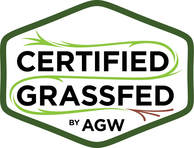 In the 7 years we have been either buying a side of pork or growing our own (the last 3 years) I have learned a lot about what we eat and use, what to ask for, how to package it and other "intricacies" of the cutting instructions process. I must admit I never really researched any of this, and if you do, it can be a bit confusing as there are different names for the same cuts and an infinity of ways to cut the animal! Hopefully this makes it simple and helpful, and if you have questions at the end, please leave a comment with your questions or contact us directly by email. We are here to help! I will lay this out by “part of the animal”, as this is how the processor will be asking for your instructions. LOIN & RIBS This is the area between the shoulder (also called butt... I know- what?) and back legs (also called ham) and is the leanest, most tender part of the animal. Rib and loin chops are cut from this area, as are pork loin roasts and tenderloin roasts. Being the leanest, these cuts will be dry if overcooked, so these are your “quickest” cook cuts. Loin: While this is pretty straight forward, the choice matters because you can either get…
BUT, if you get bone-in pork chops, you CANNOT get Baby back ribs or tenderloin! Ribs:
P.S. We typically like our chops be cut 1″ thick, but if you like them thicker/thinner, please request. Cooking notes: Baby Back Ribs: Baby back ribs are cut from the section of the rib cage closest to the backbone. They are much leaner than spareribs, which is why they need special attention to keep from drying out on the grill! Tenderloin Roast: This lean, delicate, boneless roast cooks very quickly because it’s so small, usually weighing just about 1 pound. Since there is very little marbling, this roast (which is equivalent to beef tenderloin) cannot be overcooked without ruining its texture. BUTT/SHOULDER This is the upper portion of the shoulder (called the blade shoulder) and these cuts are well marbled with fat and contain a lot of connective tissue, making them ideal candidates for slow-cooking methods like braising, stewing, or barbecuing.
Pork Shoulder Roast: It is rich in fat and connective tissue. Alternate Names: Shoulder arm picnic, picnic shoulder, fresh picnic, picnic roast Best Cooking Methods: Grill roasting, barbecuing, roasting, braising. Pork Butt Roast: This large, flavorful cut can weigh between 6-10lbs when they are “bone in”. Alternate Names: Boston shoulder, pork butt, Boston butt Best Cooking Methods: Slow roasting, barbecuing, stewing, braising If this sounds like too much, remember that the meat contains a great deal of fat, which will render out during cooking. Also note that if you have a great deal of meat left over, you can typically freeze the leftovers, but you can also ask the butcher to cut the roasts smaller (3-4lbs?) Pork steaks are taken from the shoulder area of the pig and are usually thicker and tougher than pork chops. Pork steaks are very versatile and can be cooked via sautéing, grilling or braising. Be careful not to overcook the Pork Steaks (especially when cut thin) or they will become dry and tough. Reach 145F, and remove from heat. The meat will be slightly pink, juicy, tender and delicious! Recipes for pork steaks: https://wholelottayum.com/pork-steak-recipes/ BELLY This is the fattiest part of the animal; the underside and the source of your bacon!
LEG (or Hams) Is the rump and rear leg and the source of your hams
Again, these are bone in. While boneless ham is convenient, we find the bone-in variety to be far superior in terms of taste and texture. On a whole hog you get 2 hams. Keep in mind, a whole ham on a hog can weigh between 12 and 25 pounds, so unless you have a really big family for that Easter dinner, consider asking for half hams, maybe some cured, some fresh, or half ham and half ham steaks. Cooking notes: Fresh ham is delicious slow cooked/roasted! I’ve become a big fan as I don’t love cured ham and definitely good with just one quarter cured ham for a holiday. I prefer the fresh ham for the rest of my hams! HOCKS The lower part of the leg
Cooking notes: These have become a favorite at our house for a ham/bean soup! The marrow and natural juices are released from the hocks as they cook, giving liquid-based dishes a flavor and richness that can’t be duplicated by commercially prepared ingredients. I absolutely LOVE this soup with ham hocks, and I add kale or cabbage to it- yum! JOWL These are the cheeks of the animal
We LOVE this Pasta Carbonara recipe! PORK TRIM Is any extra, unwanted portions that will be ground.
OFFAL These may include liver, kidneys, heart, skin, fat, and soup bones
Please see attached current cutting sheet for Wilson Farm Meats to get familiar with what you'd like to ask for. Questions? Make comment below, or email us directly!
0 Comments
|
AuthorMarisa usually writes about nutrition, grass fed beef, organic agriculture, as well as sharing delicious recipes; Paul writes about farm work- sharing his stories and experiences, and most times... we both collaborate on the stories! Archives
March 2024
Categories
All
|
 RSS Feed
RSS Feed


